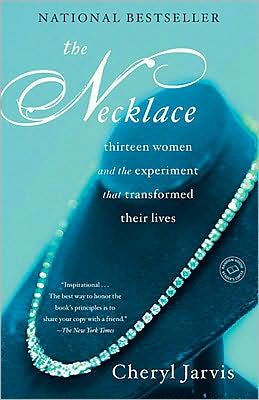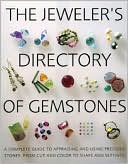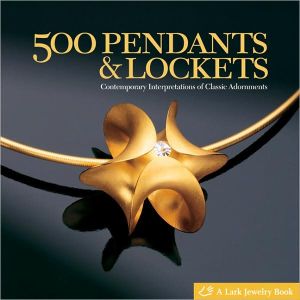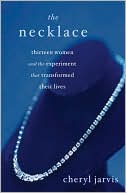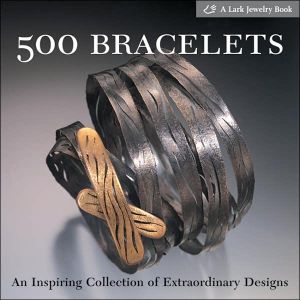The Heartless Stone: A Journey through the World of Diamonds, Deceit, and Desire
An American Library Association Notable Book\ When he proposed to his girlfriend, Tom Zoellner gave what is expected of every American man—a diamond engagement ring. But when the relationship broke apart, he was left with a used diamond that began to haunt him. His obsession carried him around the globe; from the "blood diamond" rings of Africa; to the sweltering polishing factories of India; to mines above the Arctic Circle; to illegal diggings in Brazil; to the London headquarters of De...
Search in google:
An American Library Association Notable BookWhen he proposed to his girlfriend, Tom Zoellner gave what is expected of every American man—a diamond engagement ring. But when the relationship broke apart, he was left with a used diamond that began to haunt him. His obsession carried him around the globe; from the "blood diamond" rings of Africa; to the sweltering polishing factories of India; to mines above the Arctic Circle; to illegal diggings in Brazil; to the London headquarters of De Beers, the secretive global colossus that has dominated the industry for more than a century and permanently carved the phrase "A diamond is forever" on the psyche. An adventure story in the tradition of Susan Orlean's The Orchid Thief, The Heartless Stone is a voyage into the cold heart of the world's most unyielding gem.
Chapter One\ Dying Stars Central African Republic\ They had come across the river that morning, he said, as he took the stones from his pocket.\ He set them in a line on the patio table. They looked melted and yellowish, as if someone had put them to a blowtorch. The smuggler and his three friends studied me as I held one up to the sunlight and tried to peer into it.\ We're going to have to make this quick, said the man who owned the house. The police could come in, and then we'd all be in jail. He smiled vaguely at this thought. Across the alley, birds roosted in the broken-out window frames of a government building.\ The smuggler watched me handle the rock. He said something in French to his friends. One of them tapped out a quick rhythm in his hand with the butt of his cell phone. Another glanced at the door to the alley and fingered the edge of the jacket he wore, even though it was a warm day.\ You brought these from the Congo? I asked.\ Today, he said. In a wooden canoe rowed over to Bangui. The mine itself was several hundred kilometers away, down a road into the jungle. I looked again at the dull yellow octahedron, wondering about its history, pretending I knew what I was looking at.\ He is wondering who you really are, said the man who owned the house.\ The smuggler placed the stones in the middle of a bank note, carefully folded it into a square, and made it disappear into his pants pocket. All four of them stared at me with flat eyes.\ There are more where these came from? I asked.\ Oh yes, I was told. Hundreds more. Thousands more.\ Now: did I want to buy?\ No. I have bought only one in my life. It was three years ago in California, over an ammonia-washed glass countertop. I was planning to ask my girlfriend, Anne, to marry me and was full of ever-deepening love. Jacqueline, the Asian woman behind the counter, showed me a series of stones, which she poured out of individual manila envelopes and set in a line. I peered at them all under a jeweler's loupe, as if I knew what I was looking at, and listened as Jacqueline explained the relative merits of each. She showed me the tiny angular hearts that clustered around the bases, like the petals of a flower.\ There was one stone a bit clearer than the rest, slightly over a carat, and we haggled over the price a bit before I decided to buy it. Jacqueline fitted it into a Tiffany setting and I picked it up a week later. The stone was held aloft over the band in gold supports, like a preacher in his pulpit. I admired its sparkle. Jacqueline called it "the firing." I was then two weeks away from giving the ring to Anne on a precipice of land that overlooked the Golden Gate Bridge through a tunnel of cypress. This was to be a moment I had dreamed of since I was old enough to understand there was something special about girls.\ Where did it come from? I asked her, just to say something. I was privately marveling at writing the biggest check of my life.\ I don't know, she said.\ Is there any way to tell? I asked.\ Not really, she said. Probably Africa. That's where they all come from.\ The place to go if you really want to see how some make their way to America is a nation called the Central African Republic. It is a landlocked crescent of ochre-colored earth about the size of Texas at the geographic heart of Africa. To fly over it at night is to fly over a carpet of complete darkness except for the occasional small cooking fire flickering up through the trees. There are no traffic signals, not a single mile of railroad track, and almost no electric lights outside of the capital city of Bangui. The nation is so poor that the government cannot pay its own employees any wages, and uniformed soldiers routinely beg money from passersby. Butterflies alight on the dirt roads and broad jungle leaves, and some locals try to make money by ripping the colorful wings off the butterflies and gluing them to paper to make artwork.\ Children drunk on glue wander the filthy core of Bangui in broken flip-flops, begging for francs. Their T-shirts from Western aid agencies are often dotted with gummy clots; this is where they have smeared the glue to huff through the cloth. Shoe polish is another favorite intoxicant—it is spread on bread like jelly and eaten for a high. Still others take a stolen audiotape and soak it in a jar of water for a week. The resulting home brew brings strange hallucinations. Some of the street children will grab their crotches when they approach new faces for coins. Trading sex for money is common here, despite a national rate of AIDS infection estimated at one in every seven persons. "It's not always for money," a French schoolteacher told me. "Children need affection, to be touched is instinctual, and this is the only way a lot of them can get it."\ The borders have been sealed to foreigners ever since the latest in a long series of coups toppled the government in March 2003, so there is really only one legitimate way in or out. That's the once-weekly Air France flight from Paris, which is inevitably crowded with a slice of the nation's tiny ruling class—the only ones who can afford the fare. The Sunday morning arrival of Air France is a free-for-all in the northern part of the city of Bangui. Hundreds of taxi hustlers and freelance luggage porters cram close to the perimeter fence as they watch the passengers step from one world into another, out of the air-conditioned cabin with its fois gras and Bordeaux and copies of Paris Match and into the fecund obscurity.\ In a waiting room nearby, with thick wire mesh and tattered curtains covering the windows, are the departing passengers. They are protected like dignitaries from the masses outside. I learned later that some of them were almost certainly carrying a highly portable fortune in the folds of their business suits and warm-up jackets. They were able to carry wealth that equaled the annual wages of more than two thousand people. And without showing a bulge.\ This is because the Central African Republic—corrupt, destitute, and nearly forgotten by the rest of the world—has been one of the best places on the continent to erase the history of a dirty diamond and smuggle it into the legitimate market.\ I came because I wanted to see how it was done.\ History has never been happy here. There have been people living in primitive agricultural settlements in this part of Africa at least five centuries before Christ, but today, the region is one of the most depopulated on the continent, a consequence of heavy slave-raiding activity in the seventeenth century. Arab bands from the north captured entire tribes and sold them to slave traders on the coast, and later on elevated blocks in Cairo. If any coherent records existed, it is likely that many American blacks could trace their ancestral lines to villages that disappeared centuries ago.\ The French seized the region from an Egyptian sultan in the 1880s, named it Oubangui-Chari, and made it a department of a vast bloc of colonial real estate called French Equatorial Africa. They also built a plantation-style economy and set up the ramshackle capital of Bangui on a river port, positioned to move ivory and cotton out to the Atlantic. Export companies became the effective rulers of the colony. When André Gide visited the region in 1925, he called it "a country in ruins for the profit of a few." The adults were forced to harvest wild rubber while their children were taught to speak French and encouraged to forget their native language of Sango. The French also introduced their cooking, and in some of the farthest villages, it is possible to spend a few francs for a baguette, still gritty with black ash from the open fire it has been baked over.\ When the independence movement swept Africa in the late 1950s, the region was among the first to break away from its colonial masters. The first president, Barthélémy Boganda, consolidated power in 1958 and tried to build a democracy out of the green web of clans and villages that shared little but language and hunger. The name, Central African Republic, was as empty as the results. The first of a long series of military coups took place eight years after independence, when General Jean-Bédel Bokassa and a band of soliders took control of the Presidential Palace.* Bokassa began an aggressive program of building up the nation's infrastructure, and his own wealth, in the process. About half of the 375 kilometers of asphalt road in the country—mostly potholed streets in Bangui—can be credited to Bokassa's initiative at teasing development money in exchange for uranium that helped France build its nuclear program.\ Bokassa's ego was titanic, even by the supersized standards of twentieth-century African strongmen. He built a new television station to broadcast his speeches, even though there were an estimated forty sets in the entire country at the time. He married seventeen wives, converted back and forth from Islam to Christianity, and had an extra-long military jacket tailored to accommodate all the various medals he awarded himself. But it was not enough. To the astonishment of even his most dedicated sycophants, he decided to declare himself "Emperor Bokassa I," and changed the name of his landlocked nation to the Central African Empire to suit his new title.\ He had himself crowned emperor on December 4, 1977, in a spectacle that cost about a third of the nation's gross national product. Hundreds of mango trees that had lined Bangui's wide avenues were cut down to better accommodate the imperial procession, and a good portion of the capital's population was compelled to march behind a train of white horses imported from Belgium, pulling an antique coach decorated with golden eagles. Inside was the new Emperor Bokassa, almost lost within a 32-pound coronation robe with 2 million tiny pearls and crystal beads sewn into the fabric. Atop his head was a crown that cost $2 million, with a doorknob-sized 138-carat diamond as centerpiece.\ It was an appropriate symbol, for diamonds had helped keep him in power. Bokassa had given several of his country's big-carat discoveries to his close ally and game-hunting partner, French president Valéry Giscard d'Estaing. The disclosure of the gifts embarrassed the French president, but not nearly as much as what happened in the winter of 1979. Bokassa decreed that all the nation's schoolchildren should wear uniforms—and the only uniform producer in Bangui happened to be one of his wives. Poor children (there is almost no other variety of child in Bangui) couldn't begin to afford the expense and a group of them threw rocks at the emperor's limousine one day in protest. An enraged Bokassa rounded up approximately one hundred children, innocent and guilty alike, and had them murdered. Bokassa killed many himself, and kept their remains in a refrigerator in his palace.\ In the same larder he kept the corpses of some of the political enemies he had liquidated, and Bokassa was said to have snacked on their brains and hearts. The French were mortified enough to engineer a coup that relieved the emperor of power, especially after Bokassa claimed that he had surreptitiously fed human flesh to an unwitting President Giscard d'Estaing during several of their banquets together. The testimony of the palace chef at a 1986 trial was damning. Bokassa was sentenced to lifetime house arrest in a small house in Bangui, where he was treated something like an aged lion in a zoo. He died in 1996.\ The latest coup—the ninth since independence—toppled the government of President Félix Patasse in March 2003. He had made the mistake of leaving the Presidential Palace for a brief trip to Cameroon. But he had also forgotten the other key rule of staying in power in Africa: Always keep your people paid. Soldiers tired of working for free refused to put up much of a fight against the rebels, so the revolution was relatively bloodless. The portraits on the walls of the Presidential Palace changed, but little else did. When I was there, civil servants were going into their fourth month without wages and the finance minister announced that no disbursements would be coming anytime soon. The treasury was bankrupt. The French ominously announced the deployment of a peacekeeping detachment. Soldiers with machine guns and rocket launchers cruised around Bangui in jeeps. At New Year's Eve 2004, the Central African Republic was again teetering on the edge of chaos.\ "Listen. Here is something you must understand. Diamonds are an illusion, diamonds are a dream," said Joseph N'gozo, leaning back in his chair. He used to be an economic official with the U.S. Embassy, back when there was a U.S. Embassy. Now he was trying to make money in diamonds and not having a lot of luck.\ We were having dinner at Le Relais des Chasses, a restaurant near the center of Bangui popular with French expatriates. Its name means "The Hunting Club." N'gozo wore a colorful African shirt and pinstriped banker's pants.\ "They have no role in the tradition of our society," he said in accented English. "We mine for them only because it could make us some money. We want to work hard, the American dream. And diamonds are the price of admission to what we think we want."\ Joseph owned a small mine in a sandy patch of river bottom, about eighty kilometers north of Bangui. He paid his ten crewmen the equivalent of $3 a day—top wages by rural African standards—to shovel the dirt out of the pit into sifts. The slurry is then washed in river water as the crewmen keep their eyes out for the glint of magic rock.\ "They are not geologists," said Joseph, "but they know where to go. They can read a riverbank."\ His miners hunt for what are called alluvial diamonds—those stones washed out of dead volcano cores by the rainstorms that pound Central Africa every summer. These are the easiest possible diamonds to discover and sell. They lie five meters below the surface at the most, and some can be found simply by brushing a few inches of sand away from the topsoil. There is no telling how many lie deeper—undiscovered and probably destined to remain that way—because heavy equipment, geological expertise, and working capital are all almost nonexistent here.\ Even so, the nation's eighty thousand miners still managed to find the retail equivalent of $2.5 billion in gemstones in the sand every year. With shovels and sifts and sweat, they made the Central African Republic the tenth biggest diamond-producing country in the world. And for all of it, their pay was miserly, their days long and hot, and their country so poor that two-thirds of the population lived on an income of less than a dollar a day. According to the government, about 90 percent of the nation's diamonds were found by "artisans"—a euphemism for hired labor crews from rural villages. The work is dirty and miserable. The mines usually go no deeper than five meters underground, but the soil is unstable and walls often collapse, killing miners. There are no statistics to show how many are killed in mine accidents each year, but nearly everybody in the fields has heard stories of people dying this way. For almost everyone who lives in this part of Africa, however, this is the only kind of work that results in anything other than sustenance wages. It is the only real dream in sight.\ "Diamonds can boost this country into boom times," Joseph said. His buoyancy seemed unshakable. The band onstage began to play a version of "She'll Be Coming 'Round the Mountain When She Comes," with the words in Sango. I ordered another beer and Joseph had another Fanta. Earlier in the evening, he had showed me the logbook that each mine operator is legally required to keep, called a bordure d'achat, or book of sale. It was in a small composition book with a grainy black-and-white cover, the same kind that schoolchildren use to copy lessons. Joseph showed me how a mine operator was supposed to fill it out by hand. Each diamond was to be listed on the right-hand side, and there were columns for the name of the miner who found it, the place it was found, its size in carats, and the name of the buying agency where it was sold. This was all you needed in the Central African Republic to verify that another diamond was heading to market.\ Let's say a miner gets a diamond from someplace else? I asked. Like from a smuggler.\ Joseph spoke slowly. "This system works in theory," he said. "In practice, this is very difficult to enforce."\ The Central African Republic became a smuggler's paradise when two things happened in the late 1990s. The first was the outbreak of a vicious civil war right across the river. The second was the growing awareness that diamonds—the elemental symbol of love—were responsible for mass murder.\ Bangui is the next major city north of the former Belgian colony that used to be called Zaire, the place that Joseph Conrad described in Heart of Darkness as "so hopeless and so dark, so impenetrable to human thought, so pitiless to human weakness." It was renamed the Democratic Republic of the Congo in 1997 after the longtime dictator Mobutu Sese Seko fled the country. Rebel armies seeking to topple the regime of the new president, Laurent Kabila, were able to purchase rifles and grenades by simply invading the diamond fields in the north and selling the plunder. Kabila fought the rebels with his own sale of the country's vast diamond reserves, creating, in effect, the same kind of kleptocracy that propped up Mobutu for three decades.\ Soldiers—often no more than twelve years old—frequently went to work themselves in the mines, and the shovel became as important as the Kalashnikov as a tool of war. Diamond fields became important military targets, and those who tried to defend them would occasionally be crucified to trees. Some of the stones were taken out of the country via midnight transfers at remote airstrips. But many were sold blatantly in the open to buying offices in the capital of the Congo, which in turn forwarded them via air cargo to various European cities. Many of them wound up passing through the second floor of a dull concrete building near the financial district of London.\ This was the selling office of the De Beers Consolidated Mines, Ltd., one of the most lasting monopolies on Earth. It had been founded by strongmen in the heyday of colonial Africa and carries with it a nimbus of invincibility and near-royal confidence in its mission to keep the price of diamonds high by limiting their availability and inflaming demand with heavy-barreled advertising campaigns. Billions of dollars worth of rough diamonds used to be stored in its basement vaults, and its wholesalers are the most powerful elite of the jewelry world. De Beers is not quite the evil empire that its critics make it out to be, and I would come to learn that its majestic facade concealed a surprising level of incompetence, but it still maintains a level of control over the industry today unparalleled in any other commodity trade. And critics charge that it turned a blind eye for several years to the true source of all the gems being dug up by warrior children, which eventually found their way onto the fingers of American brides.\ Diamond sales raised more than $1 billion to pay for the violent quagmire in the Congo which involved seven nations and killed more than 2 million people through starvation, disease, and slaughter between 1998 and 2002. Though despicable, nothing about the diamond-based financing was technically illegal. And it was good business, too. The cargo of African wars made up as much as 14 percent of the world's entire diamond trade. There was no way to sort the bloody stones from the clean ones, and the diamond industry had no interest in separating the two. Once they were shipped to Antwerp or London, they were dumped into bulk sales pouches like wheat seeds poured anonymously into the bins of a Kansas grain elevator. Jacqueline was right: there was simply no way to tell where my fiancée's ring had come from.\ Good intentions sealed the Central African Republic's fate. A British organization named Global Witness published a groundbreaking report in 1998 called A Rough Trade. It exposed the runaway use of diamonds to fuel African civil wars, especially on the part of a rebel army in the former Portuguese colony of Angola. Stories also began to leak out about the diamond-vending Revolutionary United Front of Sierra Leone, whose doped-up soldiers used machetes to hack off the hands and arms of thousands of villagers in an attempt to keep them from voting. The phrase "blood diamonds" entered the Western vocabulary and De Beers was shamed into closing its buying offices in Angola. Retailers proclaimed themselves shocked their diamonds might have been used to buy guns or machetes. "The thought that a Tiffany product, no matter how indirectly, could be linked to the horrific events of Sierra Leone absolutely and figuratively makes us lose sleep," Tiffany & Co. CEO Michael Kowalski told The Washington Post.\ Feeling the pressure, South Africa and forty-four other diamond-producing countries developed a cursory method to stem the flow of blood diamonds known as the Kimberley Process. Now the daily loads of gems being flown to Europe had to come with a certificate declaring they were not mined in a nation in a technical state of war. The diamond industry hailed it as a giant step in the right direction. But human rights groups criticized it as superficial and full of loopholes. And one of the many problems was this: The capital of the Central African Republic—with six buying agencies and a direct pipeline to Antwerp—is a ten-minute canoe ride from the edge of the Congo.\ "Officially, the government wants to make it all legal and regulated," Joseph told me as we sat next to the Oubangui River. "But unofficially, there's smuggling. I can take a stone and put it into my mouth. Under my tongue. Bam, it's gone."\ How brazen is the smuggling? The statistics of production and sale are almost laughable when you line them up next to each other. I'm saying "almost" because there is much death and suffering in the gap where some arms merchants make a tidy profit. The mines of the Central African Republic are capable of producing about 500,000 carats a year, at most. But the diamonds that showed up in Antwerp with the Central African Republic listed as the official country of origin amounted to nearly twice that in 2000. This gap persists today, and it isn't hard to guess where the extras are coming from.\ "This is the subject nobody wants to acknowledge," said Reinhard Moser, the project chief for Radio Ndeke Luka, the nation's only private radio station. "It is laughably easy to smuggle diamonds here. Nobody knows the true volume."\ Only tiny drops from this underground crystal stream can be clearly glimpsed, and then only for a moment. When I told the men from the Congo that I couldn't buy any of their diamonds that morning on the patio, they left angry. I saw them later that day outside the high metal walls of a diamond-buying agency whose office was on the road to the airport.\ Three more pebbles, tossed into an ocean of dreams.\ I've had my share of truly awful moments—the kind that you wish you could blot out of your memory for good because they hurt so much—and one of them was the Tuesday night in February that Anne took the engagement ring off her finger and handed it back to me.\ We were sitting on my couch, in the midst of what would be the last of an agonizing series of discussions over whether we should go through with the wedding. The last three months of the engagement had been bad, full of doubts and silences, and in retrospect, we made the right decision; but I will still never forget the look on her face as she removed the diamond and handed it to me. I stared at it in my palm. It was still a little warm from her hand.\ After she walked out the door, I put the ring back into the blue box it came in, the one that closed with a snap. I tucked the box in the corner of my top desk drawer, put some old phone bills over it, and promptly got drunk. For the next week, I opened the box each night just to see it, and it made me cry each time.\ After that first week, I didn't look at it again for a long time.\ There are bullet holes in the garage walls at the buying agency, souvenirs of last year's revolution. The finance director pointed them out to me with something like pride. This was one of the first places looted. "What, you think the guys before you didn't get everything?" he had asked the twelfth band of thugs who shot their way inside. This company was lucky. One of the six other licensed agencies saw its offices burned out.\ This agency was one of the most heavily fortified buildings in Bangui, outside of the Presidential Palace. It looked like a colonial estate. The walls fronted a dirt street littered with trash and crawling with beggar children, but inside the compound was a tended garden, a television satellite dish, and a Range Rover. There used to be a large illustration of a diamond on the front gate, but that had been painted over to conceal the true business of the place and the wealth inside. Not that it was a big secret in Bangui. This was the mouth of the pipeline to Antwerp, where virtually all of the Central African Republic's diamonds would enter the Western market.\ "Look, let me be honest with you," the director said, about half an hour into our conversation. He was a Belgian, about thirty years old, with gray patches salted through his hair. "I didn't come here to help this country. I didn't come here to build hospitals. I could say that I did, but I'm not that kind of liar. I came here to do business, nothing more. But I really think the government should stop paying these thieves and put the money into schools or a hospital. When you see all this misery and the people all around not getting paid wages, it breaks your heart. All over the world, people believe diamond buyers are making huge profits. But those days are over. We're fighting here like crazy, man. We have to take a lot of discomfort for our profit."\ This was after the point at which he felt comfortable enough with me to produce, as casually as if he were brushing away a fly, a Beretta pistol from his waistband, to show how he'd welcome looters when the next coup arrived. Almost as thoughtlessly, he dug out a piece of rough that had been sold to him not long ago. It was 27 carats, about the size of a big ripe blueberry. How much had he paid for it? About $52,000. I played with it idly in my hands while I asked him about the illegal flow of diamonds in and out of the country. He was quick to explain that he and his company were not involved, but readily admitted that it was common practice by others.\ "I don't buy diamonds from people I don't know," he said. "In any profession, you have good and bad. But we are taking a lot of risks to establish these offices in unstable places. Smuggling is smuggling."\ This, of course, has been a feature of the diamond trade for centuries. There is simply no better way to move around a large sum of money in a small place—almost no mineral is worth more per gram. This is the signature fact of a diamond, and its curse. It is why violence and deception trail it like mist. There are lots of places on the body to tuck one away. Jean-Baptiste Tavernier, one of the first European diamond merchant kings, visited India in 1665 and reported of the miners: "And their wages are so small they do not manifest any scruple, when searching in the sand, about concealing a stone for themselves when they can, and being naked, save for a small cloth which covers their private parts, they adroitly conceive to swallow it."\ How does the smuggling happen in the Central African Republic today? I wanted to know.\ The finance director took the berry-sized diamond from my hand, held it upward, and fixed me with a stare that I was unable to read.\ "Take this and put it in your ass," he said. "You can walk out of this country with a half-million dollars in your ass. Six stones, that's about the size of a small piece of shit. Sell it to a gangster. Watch TV, man. That's what's happening in reality. . . . You will always find people willing to do something for you the moment you offer the right price."\ Seeing a legitimate diamond is a lot harder than seeing a dirty one in the Central African Republic. I went down to the Ministry of Mines, which was in a motel-shaped building wrapped around a dusty courtyard. I asked one of the senior deputies, a genial English-speaking man named Cyriaque Gonda, if I could take a look at a diamond-producing region that week.\ Certainly that could be arranged, he told me. There are two large mining districts, both along broad river valleys and both about a day's drive from Bangui. But there was a small problem. It was illegal for foreigners to enter these areas. I would need a permit and a letter of permission from the minister and those things would cost me $200, payable in U.S. dollars.\ "But I don't want to buy any diamonds," I said. "I don't want to dig for any diamonds. I just want to see where they come from."\ "Yes, certainly," said Cyriaque. But $200 American is what it would cost. In cash.\ "I don't think I'm going to pay," I said, wondering if this was a legitimate fee.\ "Sorry," said Cyriaque. "That is the rule."\ What was the big secret? I wondered. This was a mineral that underwrote a huge part of the economy. Diamonds were responsible for up to 60 percent of the nation's export income, and slightly more than half of them were clean. Wouldn't they want to show them off? I had already spent $130 of my dwindling cash at the Ministry of Communications for a press permit, signed by the minister, Parfait M'baye. He was supposed to have been one of the actors in the March 2003 coup that brought the new government to power. M'baye now occupied a dingy two-story office with a stone wall out front and an empty flagpole tipping to the side. Each ministry here is its own province, and every request from the outside is an opportunity to create more paperwork and collect more fees. The French have left their legacy in Central Africa and part of it is the worship of government process, no matter how shaky the government or pointless the process.\ I left the ministry, annoyed, and started walking along Avenue Boganda, past roadside ditches filled with trash and old grayish water, thick enough to be like gelatin. Street vendors sold cell phone covers, plastic dolls, and cooked goat meat from plywood shelves balanced on tires. The air was hazy with harmitaan, the mixture of veld smoke and desert sand blown down from the Sahara that particulates the sky every winter. There was a wooden arch at the entrance to the main traffic roundabout, a remnant of the Bokassa era. I walked under it and up the gentle hill to the high gates of the 1960s-era Presidential Palace, where a right turn would take me back to the hotel where I was staying.\ I had gone several paces down a broad asphalt avenue—by far the smoothest in Bangui—before I realized the voice screaming in angry French behind me was screaming at me.\ I turned around. A man wearing a white suit rushed over and flashed a handwritten document covered in ink stamps and encased in plastic. After two minutes, I understood the word gendarme and he understood that I spoke extremely poor French. "Your passport," he said in English, and I handed it to him. "Come with me," he said, taking me by the arm and leading me inside the gates of the presidential compound. "What is the problem?" I asked, trying to keep my voice casual. He didn't answer. He had an almost perfectly circular patch of white hair on the back of his head.\ We walked up a grassy mall, up a flight of steps, and into a formal waiting room with marble columns, a chandelier, and a large oil painting of President Bozize on the far wall. This was apparently the antechamber to the president's office. There was something wrong with the electric lights in the room; they kept flickering on and off, and the room flashed from light to dim. I sat in a leather chair and watched as the policeman in the suit gestured angrily to another policeman and pointed over at me. Then they both disappeared.\ I had a five-minute wait before I was taken outside the gates to a police station and made to stand against a plaster wall. Beside me was a rectangular hole where a light switch had been ripped out. "What did you think you were doing?" a man in a uniform asked me in broken English. "I don't know," I said. He shrugged, and turned away.\ What had I done? I had just refused to pay a fee to the Ministry of Mines. Was that the problem? Or could they have somehow known that I had been sitting on a patio in the suburbs when a smuggler and his friends tried to unload three diamonds from the Congo? That would be a year in jail for me.\ The man with the patch of white hair came out of a room with a padded door. He took my hand in a limp mortician's handshake and said in careful English: "My work here is done. Good-bye." And then he smiled for the first time, showing me his teeth. Another policeman took my arm. He and two soldiers in camouflage led me out of the station, through the streets of Bangui, where the roadside market was in full clatter. A few of the vendors stared at me.\ "Can you tell me where we're going?" I asked, again in the friendliest voice I could summon. I got silence for an answer.\ We walked south toward the port of Bangui, the one the French had built in the 1880s to ship cotton and diamonds down the river to the Atlantic. It looked like it had not been used in decades. There was a blue-barred gate in front and soldiers standing sentry at the edges.\ "Why are we going into the port?" I asked my escorts. They only waved me forward impatiently, across the concrete tarmac and around the back of a two-story warehouse. There was a door wide enough for large cargo that led into a dim chamber. Dead electric bulbs hung from wires in the ceiling.\ The two soldiers behind me unslung their rifles. They were held casually, but the muzzles were pointed at the approximate region of my ankles.\ "You want me to go in there?" I asked. For the first time since being arrested, I began to get frightened. I could feel my hands start to tremble. Visions of an impromptu execution and a river burial began playing in my mental cineplex. They must have somehow found out I had met with diamond smugglers.\ The policeman urged me forward, and we walked into the cargo hold together, down a dark hallway, and through a series of rooms. They were filled with trash, and loose wires hung from the ceiling.\ Though it was ridiculous—I had done nothing wrong—I felt twitchy all over, my back especially. If they were going to shoot me, would it be here, without warning? Or would I be talked to first, made to understand, spun around to face the rifles?\ The soldiers led me to a cement staircase and I was motioned to climb. On the second floor, I was led into the dim office where a sign on the door proclaimed secretariat of police. The man behind the desk had rheumy eyes, the sunken face of an AIDS victim, and hesitant English that was still far superior to my French. He wanted to know where I was staying, who I was working for, what my mother's name was, why I had walked in front of the Presidential Palace.\ "The palace?" I asked.\ "That road is forbidden for passage," he said. "There was a sign there."\ "I am very sorry," I said. "I didn't see it."\ Before I had left for Africa, a friend supplied me with an emergency tool: a letter written on some stationery from Time magazine with a nonexistent editor's scrawl at the bottom, identifying the bearer as a freelancer on assignment. I had used it the day before with a low-level official at the Ministry of Communications to convince him I hadn't come to Bangui to smuggle out diamonds, even though appearances probably indicated otherwise. In a nation without tourists or a U.S. Embassy, there were few other reasons for me to be there. What the letter was really intending to say, of course, was: "This person has friends concerned for his whereabouts. Please do not kill him." I was certain Time would forgive me this case of petty misrepresentation in a tight spot. It was a magazine I had always enjoyed, that much was true.\ I pulled the letter out and showed it to the secretariat. He studied it for several minutes, eyes flicking up at me frequently, as if he were trying to reconcile the inflated person referenced in the letter with the one before him.\ "It is very lucky for you that you were not taking photographs," he said finally.\ I was handed off to another police official, this time by guards with Kalashnikovs safely behind their shoulders. He sat me down in front of his desk and began writing out a lengthy document in French. This was to be my "statement," he explained. I could see my name, my birthday, my hotel room number, and my parents' names in the jumble of words I couldn't read. Behind the policeman, through a dirty louvered window, was a view of the Oubangui River. It looked as far away as Miami. Fishermen in canoes paddled close to the Congo shore. I wondered what they were carrying. I thought of Anne, my lost fiancée, and the ring I had given her. Had her diamond come across this same river, in the shadow of a dark warehouse that was really a police station?\ This, of course, was the Central African Republic personified: The government was too preoccupied with remaining in power and fighting off counterinsurgents to do much about the smuggling. This was a world where a lone person walking outside the walls of the Presidential Palace was of much greater concern than illicit diamonds coming over from the Congo. The French had left the nation with almost nothing, except for their language, their bread, a few rotting military bases, and their rigid legal system, which strained out gnats while entire camels were swallowed. It was like the diamond registry book that Joseph had showed me: so easy to sleepwalk through the motions, so oblivious to what was really happening. Around this carefully inefficient house of law, a vast green anarchy groaned.\ After an hour had passed, the policeman finally put the finished document in front of me, lettered carefully in French. It was three pages long. He handed me a pen.\ "I can't understand this," I told him, through a boy in a T-shirt who knew a little English. "Je ne parle pas français. I can't read it."\ "He says you must put a mark on it," the boy told me.\ I looked at the policeman and shook my head, unafraid of being shot anymore. If it was going to happen, it would have happened already, and the passage of time had probably calmed things down. Either jail or the demand for a hefty bribe was coming down on me, but either was going to be far better than signing a confession to an unknown deed.\ "He says you must mark it," the boy repeated.\ I shrugged apologetically and shook my head and did nothing. The policeman looked at me with unfiltered contempt, tossed me my passport across the desk, and told me, in words that I did not understand, but did, to get the hell out of there. And I obeyed.\ …\ Copyright © 2006 by Tom Zoellner. All rights reserved.


